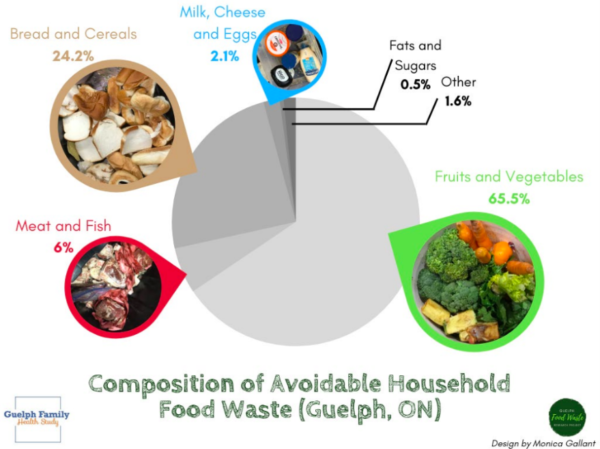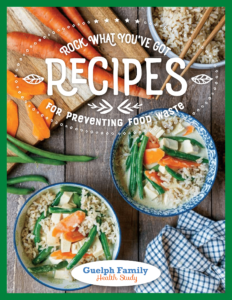
Food prices, sustainability and the ongoing COVID-19 pandemic will be the key influences on our eating habits and practices this year. Here’s our roundup of the top 10 food and nutrition trends to watch in 2022.
1. Pantry to Plate
Who can forget the sourdough baking craze in 2020? The cooking and baking skills we built at the beginning of the pandemic will stick with us. With food prices expected to rise 5 to 7% this year, an average family of four can expect to pay an extra $966 in groceries this year according to the annual Canada’s Food Price Report. Consumers will be looking for creative ways to use up those ingredients at the back of the pantry and fridge. What’s more, this trend will help to tackle food waste in our kitchens.
2. Streamlined Menus
Look for smaller menus as restaurant operators are adapting with potential supply chain snags. They’ll be innovating with local ingredients already on hand and opting for simple prix fixe menus rather than bringing in new SKUs. Food and Wine magazine reports that with rising food prices, chefs will be taking creative approaches to minimize waste and streamlining their menus to effectively manage their costs.
3. Plant based – The Next Generation
While sales of plant-based burgers appear to be declining, food giants such as Unilever are still committed to offering plant-based options to help reduce the environmental impact of the global food chain. In fact, the company is calling for public health strategies that facilitate the transition to a balanced diet with more diverse nutrient-dense plant foods through consumer education, food fortification and possibly supplementation. Insights from the 2022 Trend Report by Nourish suggests that there are gaps in plant-based categories like snacks, desserts and bakery. Keep your eyes out for novel plant-based ingredients and offerings.
4. Bye Bye Plastics
Not only are sustainability and climate concerns driving our food choices, but they’re also inspiring positive changes in the use of plastics. Just last month, Walmart Canada officially announced the elimination of single use plastic bags from in-store shopping as well as online grocery pickup and delivery orders from each of their 400 stores across the country. This would amount to eliminating almost 750 million plastic bags each year. Biodegradable, compostable cucumber wraps are already on the market, and we can expect to see more innovations from grocers and food manufacturers.
5. Packaging
With a move towards take-out and meal delivery, chefs surveyed in the “What’s Hot 2022 Culinary Forecast” by the National Restaurant Association have actually ranked packaging four times in their top 10 trends for 2022:
- Trend #1 – Packaging that is sustainable / reusable / recyclable
- Trend #2 – Packaging that travels intact to maintain food quality
- Trend #3 -Packaging that retains temperature
- Trend #9 – Packaging that is tamper proof for food security
6. Immunity Support
As the pandemic continues, immunity remains top of mind. Findings from the 10th annual “What’s Trending in Nutrition” survey commissioned by Today’s Dietitian and Pollock Communications predicts that immunity support will remain a key purchase driver for 2022. Instead of “boosting” the immune system, consumers will realize that daily nutrition is important to keep the immune system strong and functioning well. Key supports for the immune system include protein, probiotics, selenium, zinc and vitamins A, C and D. Other purchase drivers identified from the dietitian survey are: affordable and value-based items, as well as food and beverages which offer comfort and emotional well-being.
7. Digital Do’s and Don’ts
Digital ordering capabilities, QR menus and touchless payment options will continue to become mainstream in restaurants and food service. In the survey of almost 1,200 dietitians, 90% of them cited online food shopping as the biggest trend from the pandemic that they believe will continue. This will compel marketers to reimagine ways to reach consumers on virtual shopping platforms, such as online promotions, digital coupons and immersive virtual branding experiences. On the other hand, the digital world is fuelling false nutrition news and dietitians say that social media is the top source of nutrition misinformation, with friends / family coming in second, and celebrities a close third.
8. Fuel for Remote Working & Learning
Working remotely from home, hybrid work models and even online schooling mean that more breakfasts and lunches will be made and enjoyed at home. Nestle USA predicts that consumers will be on the lookout for more at-home breakfast and lunch options such as heat-and-eat meals. According to top chefs, breakfast trends will include non-traditional proteins such as chorizo or vegan bacon, plant-based breakfast sandwiches and egg-base breakfast bowls. For lunch, trends point to globally inspired salads and grain-based bowls.
9. Non-alcoholic Beverages
Research from Whole Foods and The Hartman Group are noticing a growing community of “sober curious” millennials and Gen Z-ers. During pandemic lockdowns and restrictions on indoor gatherings, consumers are taking a more mindful approach to enjoying alcohol and embracing a world of “dry-solation”. Enter beverages without the buzz such as dealcoholized wines, low-alcohol beers, mocktails, and drinks with functional ingredients and adaptogens to enhance mood and relaxation.
10. Top 5 Regional Cuisines
Chefs surveyed by The National Restaurant Association and the American Culinary Federation predict that these top 5 regions and cuisines will influence the menus of 2022:
- Southeast Asian – Vietnamese, Singaporean, Philippine
- South American – Argentinian, Brazilian, Chilean
- Caribbean – Puerto Rican, Cuban, Dominican
- North African – Moroccan, Algerian, Libyan
- Western African – Nigerian, Ghanan, Western Saharan
Which of these trends are you most excited about? Let me know in the comments!



